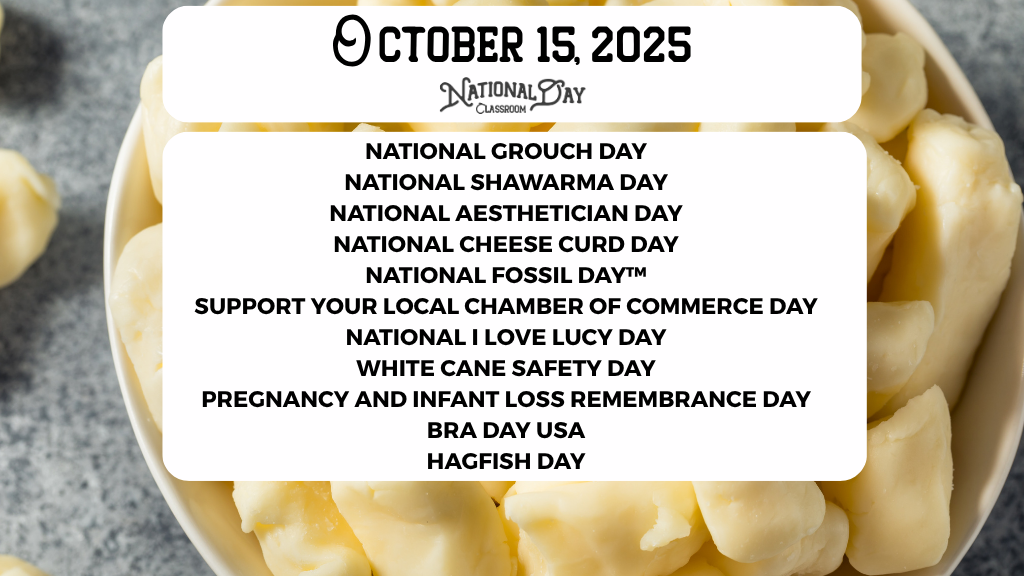
National Fossil Day Classroom Lesson: “Fossil Detectives”
Target Grade Level: Adaptable for Grades 3–6 (adjust complexity of vocabulary and discussion for your students)
Time Allotment: 45–60 minutes
Learning Objectives:
- Students will be able to define a fossil and list the main ways fossils are formed.
- Students will understand the role of a paleontologist.
- Students will be able to classify objects as a “body fossil,” a “trace fossil,” or not a fossil.
- Students will engage in a hands-on activity that simulates the fossil excavation process.
Part 1: Introduction and Vocabulary (10 minutes)
Materials: Whiteboard or projector, pictures/models of different types of fossils (bone, shell, footprint, leaf imprint).
- Engage (What is a Fossil?):
- Ask: “Has anyone ever heard of a fossil? What do you think it is?”
- Introduce the scientific definition: A fossil is the preserved remains or traces of a living thing (plant or animal) from a past geological age.
- Introduce National Fossil Day as a celebration of the scientific and educational value of fossils.
- Vocabulary & Types of Fossils:
- Introduce the key types:
- Body Fossils: Preserved parts of an ancient organism’s body (bones, shells, teeth). Show example.
- Trace Fossils: Evidence of an ancient organism’s activity (footprints, burrows, coprolites/fossilized poop). Show example.
- Introduce Paleontologist: A scientist who studies fossils to learn about life on Earth long ago.
- Introduce the key types:
- How Fossils Form (Brief Overview):
- Explain the main process: An organism dies, is quickly buried by sediment (mud, sand), and over millions of years, the layers harden into rock, preserving the remains or traces.
Part 2: Hands-On Activity: “Cookie Excavation” (25 minutes)
This popular activity allows students to act as paleontologists.
Materials (per student or group):
- 1 Chocolate Chip Cookie (preferably a dense one with lots of chips)
- 1 Toothpick or wooden skewer (the “paleontologist’s tools”)
- 1 Small paper cup or napkin (the “dig site”)
- Optional: Small paintbrushes (to dust off “dirt”)
- Optional: Worksheet for recording data (see step 3)
Procedure:
- Set the Scene: Explain that the cookie represents the rock layer where a fossil is found, and the chocolate chips are the “fossils.” Their job is to carefully excavate the fossils without damaging the cookie (rock) as much as possible.
- Excavation Rules (Ethics): Review the paleontologist’s “ethics”:
- Use tools carefully and patiently (no chewing the cookie!).
- Record and analyze the findings.
- The primary goal is to preserve the fossil (chip) and the surrounding rock (cookie).
- The Dig: Students use their toothpicks and brushes to carefully remove all the chocolate chips, placing them on their napkin.
- Data Collection (Optional Worksheet Prompts):
- How many “fossils” (chips) did you find?
- What kind of “rock” (cookie) was your fossil found in? (e.g., hard, crumbly, soft)
- Describe the process: What was the hardest part? What tool was most useful?
Part 3: Wrap-up & Assessment (10–15 minutes)
- Share and Discuss:
- Have students share their total “fossil” count and discuss the challenges of the excavation.
- Ask: “How is this activity similar to what a real paleontologist does?” (Careful work, using small tools, analyzing surroundings, recording data).
- Quick Assessment: Classifying Finds:
- Show students pictures or models of various items and have them classify them using their new vocabulary.
- Example items:
- A petrified wood sample (Body Fossil)
- A dinosaur footprint cast (Trace Fossil)
- A modern animal bone (Not a fossil, too young)
- A piece of layered rock with a leaf imprint (Trace Fossil)
Extension Activities (If Time Allows or for Homework):
- “Make Your Own Fossil”: Use modeling clay or salt dough to press small items (leaves, shells, plastic bugs) to create a cast/mold fossil impression. Let them dry and discuss the process.
- Research & Report: Have students choose a famous fossil (like T. Rex “Sue” or an Ice Age Mammoth) and research where it was found, what it tells us, and who found it.
- Virtual Field Trip: Take a virtual tour of a Natural History Museum’s fossil exhibit (many offer online tours!).
Download Fossil Day PDF Lesson Here.